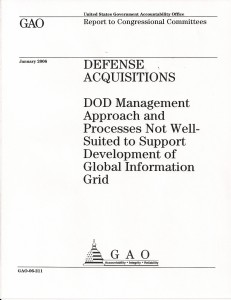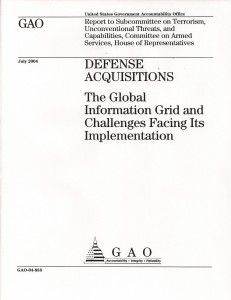
Oops 2006: DOD’s management approach for the GIG–in which no one entity is clearly in charge or accountable for results–is not optimized to enforce investment decisions across the department. The DOD Chief Information Officer has lead responsibility for the GIG development effort, but this office has less influence on investment and program decisions than the military services and defense agencies, which determine investment priorities and manage program development efforts. Consequently, the services and defense agencies have relative freedom to invest or not invest in the types of joint, net-centric systems that are consistent with GIG objectives. Without a management approach optimized to enforce departmentwide investment decisions, DOD is at risk of not knowing whether the GIG is being developed within cost and schedule, whether risks are being adequately mitigated, or whether the GIG will provide a worthwhile return on DOD’s investment. The department’s three major decision-making processes are not structured to support crosscutting, departmentwide development efforts such as the GIG. In some significant respects, the department’s processes for setting requirements, allocating resources, and managing acquisitions encourage investing in systems on an individual service and defense agency basis.



